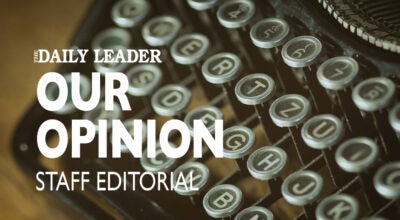Economic development comes at cost to taxpayer
Published 10:31 am Thursday, February 4, 2016
Economic development is a costly endeavor, as evidenced by the $275 million in incentives that state lawmakers are considering today.
The incentives are for a Hinds County tire plant and a Gulfport shipyard that could cumulatively invest more than $1.5 billion and create 3,500 jobs.
Gov. Phil Bryant called a special legislative session Wednesday, a day after a lawmaker told The Associated Press that such legislation was imminent.
“It’s the biggest economic development project in Mississippi history,” Bryant told AP on Wednesday afternoon after officials met with lawmakers behind closed doors to discuss incentives. “We’re going to put 3,500 Mississippians to work.”
At $275 million, putting 3,500 Mississippians to work will cost about $78,500 per job.
Senate Finance Committee Chairman Joey Fillingane, R-Sumrall, said the state would borrow about $275 million to subsidize the developments, with most money going to the tire plant. The Clarion-Ledger has reported the plant would be built by German firm Continental AG. The remainder of the money would go to the Topship shipyard in Gulfport operated by a unit of Louisiana-based Edison Chouest Offshore.
State Sen. John Horhn, D-Jackson, said Hinds County would also borrow money for the plant. The document issued by Bryant outlining permissible legislation for the session also includes property tax breaks, an agreement by municipalities not to annex the site, and other incentives, AP reported
Lawmakers must vote on industrial incentives when Mississippi borrows to pay for land, infrastructure or subsidies. State law typically requires a company to invest at least $300 million, or $150 million if the company creates 1,000 or more new jobs, to receive the richest incentives. In 2013, Mississippi granted Yokohama Rubber Co. Ltd. a projected $330 million of incentives, including up to $130 million the state borrowed, according to AP
Economic development is a fierce competition, and the state willing to fork over the most incentives usually lands the company. It’s unfortunate that industries and state governments have created an environment where that’s the case. These investments don’t always pay off, and when they don’t, taxpayers lose (Twin Creeks Solar and KiOR are two examples).
We encourage lawmakers to carefully consider taxpayers and the risks that come with these types of incentives.


